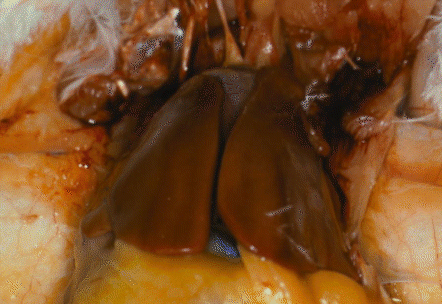
1. Oesophagus. Takes food by peristalsis from mouth to stomach
(proventriculus + gizzard).

2. Crop. Storage sack formed by expansion of the oesophagus. Birds typically fill their crop when they come across a stash of food or when the light begins to dim (so they can keep eating in the dark).
3. Proventriculus. Glandular first compartment of the stomach (on
the left in image below)..

4. Gizzard (on the right in the image above). Grinding compartment of stomach where feed and digestive enzymes are triturated (reduced to a paste) using grit (small sharp stones previously ingested by the bird).
5. Pancreas. Produces digestive enzymes for the small intestine.
6. Gall bladder. Stores bile from the liver.
7. Liver (brown organ in image below). Has many functions for the
animal, one of which is to process blood arriving from the inestine in
the hepatic portal vein. For example, if the bird digests a large
amount of carbohydrate, their sudden arrival in the general circulation
would be very dangerous for many types of cells. So, if glucose levels
are too high, the liver will store the excess as glycogen.
Conversely, when blood glucose drops too low, the bird will release
glucose from stored glycogen.

8. Small intestine. Where products of digestion are absorbed.
9. Caecum. There are two caeca just before the cloaca at the end of the small intestine.
10. Cloaca. The common opening of excretory, digestive and reporoductive systems to the exterior.